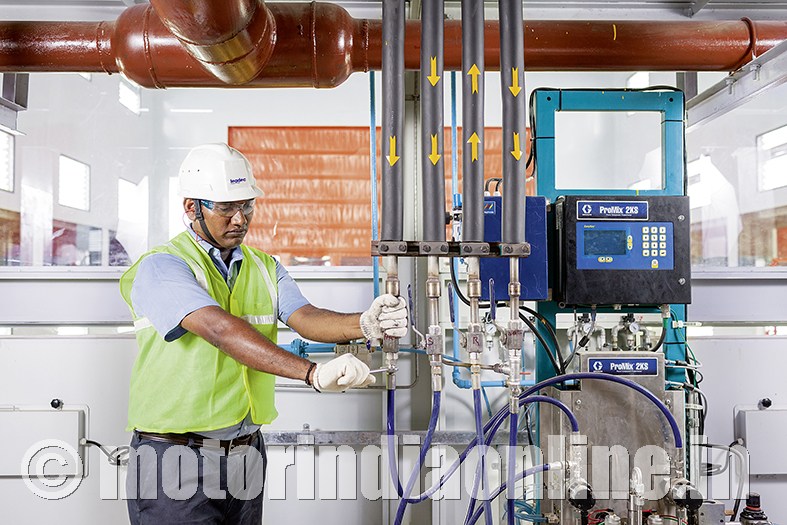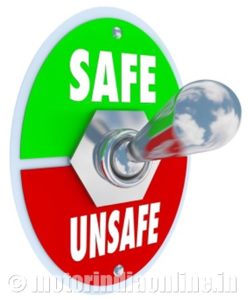Leadec, formerly known as Voith Industrial Services, providing technical services for the automotive and other industrial sectors, is working to build a safer environment for workers in an automotive plant.
Leadec India, the youngest arm of Leadec Germany, provides technical services in four major categories – Production Equipment Maintenance, Project & Automation Solutions, Production Support Services and Supply Chain Solutions.
Safety has been a primary concern at the workplace in any manufacturing plant. Poorly maintained equipment, exposed wires, lack of use of safety PPEs, lack of safety training and safety skills of workforce not only result in serious injuries to workers but also hamper production continuity.
At Leadec, safety gets top priority at each site. The main goal is to keep the frequency rate (FR) < 2.0 (a benchmark for service industries). FR is the number of reported accidents per one million worked hours. We conduct regular safety audits and safety trainings and create safety champions to ensure it the No.1 priority. In order to raise the safety standards in a working place, Leadec has been following these best practices for which it has received numerous Industry Awards.
Leadec has implemented the following best practices in multiple of its customer sites and that has helped build a strong safety culture and reduce workplace injuries.
Safety skill mapping: To enhance the focus and interest of the workforce towards safety a skill mapping program has been conducted to enhance the safety skills of each team member which are mapped on a safety card on a quarterly basis. The basic idea behind this was to create a competitive atmosphere amongst the associates and identification of the training need of each team member. Each member can come up in daily morning safety talks with his training needs so that he could move upward step by step, from one quadrant to another. Those who attain expertise in all four quadrants would have a special “Safety Champ” badge on the uniform.
Our team members take utmost care while working so that no accidents occur. We create such an atmosphere that employees are enthusiastic to learn safety and practice safety in the best possible manner.
Safety training: Safety training needs to be conducted based on the training need analysis that can be evaluated during skill mapping. Safety training as per the need analysis always yields better results and helps in systematic upgradation of individuals in safety awareness. Some of the general topics on safety training could be:
- Training on Safety PPE
- Lock out- Tag out
- Training on working at height
- Machine safeguard
- HIRA
- Safety in material handling
- Training in fire extinguisher & fire fighting
- Crane safety
- Ladder safety training
- Training in Hand tools safety
- Responsibility of Safety Champions
Monitoring safety checkpoints:
The safety triangle helps to correctly report the incident and take appropriate measures to avoid hazards. A brief explanation is given to correctly understand and follow it. A regular monthly monitoring of the number of cases at each level can act as an important indicator of the safety level in any organization.
* Severe-Lost Time Accident (LTA) – the injury is such that the victim has permanent disability.
* Lost Time Accident (LTA) – An Injury that leads to loss of man hours. (Employee does return to work the next day)
* Eg. An employee works on a an energized electrical panel and a short circuit spark occurs. Employee sustains burns on his hand/body and is medically unfit to work the next day.
* First aid / incident – An injury of a first aid nature and does not lead to loss of man days. (Employee is at the work next day.) Eg. An employee works on an energised electrical panel and while working a short circuit spark occurs. A Minor burn on his hand and he is discharged from hospital after first aid. He is certified by the medical authorities as “FIT TO WORK/FIT TO RESUME DUTY”. He is back to work.
* Near misses – Any mishap that could lead to an injury causing incident/accident. Eg. An employee works on an energised electrical panel and while working a short circuit spark occurs. There is no injury to the employee. There is no damage to the panel/equipment.
* Unsafe conditions – Unsafe condition of workplace which needs physical correction. Eg. An employee works on an energized electrical panel and water is spilled near the panel.
* Unsafe acts – An act of ignorance/deliberate that could lead to a near miss/incident/accident. Eg. An employee works on a de-energized electrical panel, but lock-out tag-out procedure not followed. No electrical gloves used.
Safety inspections & audits: Safety inspections and audits are required to be conducted regularly to look for safety hazards and unsafe practices throughout a facility. A few examples of safety audit could be:
* JIB crane audit
* Hazards audit
* Walkway audit
* Fire hydrant audit
* Tools audit
* Loto record audit
* EOT crane safety audit
* Air compressor safety audit
A safety inspection should always look for safety hazards, unsafe practices and unsafe conditions throughout a manufacturing facility. The inspection should:
* Determine whether safety check points are in place
* Determine whether safeguards are in place
* Examine whether the production equipment presents any hazards
* Determine cases of near miss and take appropriate action to eliminate any such possibilities in the future
* Prepare report for any incident and share with all to avoid it in future
* Observe work practices to identify unsafe actions
Apart from these, a good safety culture cannot be adopted by keeping an “eye on the sky.” Safety champions need to be where the action is. They need to hold one-on-one discussion with a number of workers who know the job and the dangers involved much better than anyone else.
By Bernard Sextus, Country Safety Head, Leadec India



